Multiple cases of chewing damage by moth larvae have been reported in maize crops in Victoria recently.
From these reports, three species have been identified, including the recently introduced fall armyworm (Spodoptera frugiperda).
Here’s what you need to know about recent fall armyworm observations in Victorian maize.
Several species found feeding in Victorian maize
We’ve received some reports of chewing damage to vegetative maize in Gippsland and Northern Victoria this January.
In several areas of Gippsland, there have been multiple sightings of fall armyworm larvae in maize. These areas include Yarram, Warragul and Sale. Affected plants have some windowing damage, however the crop damage is not extensive, with a few plants in localised areas displaying feeding symptoms.
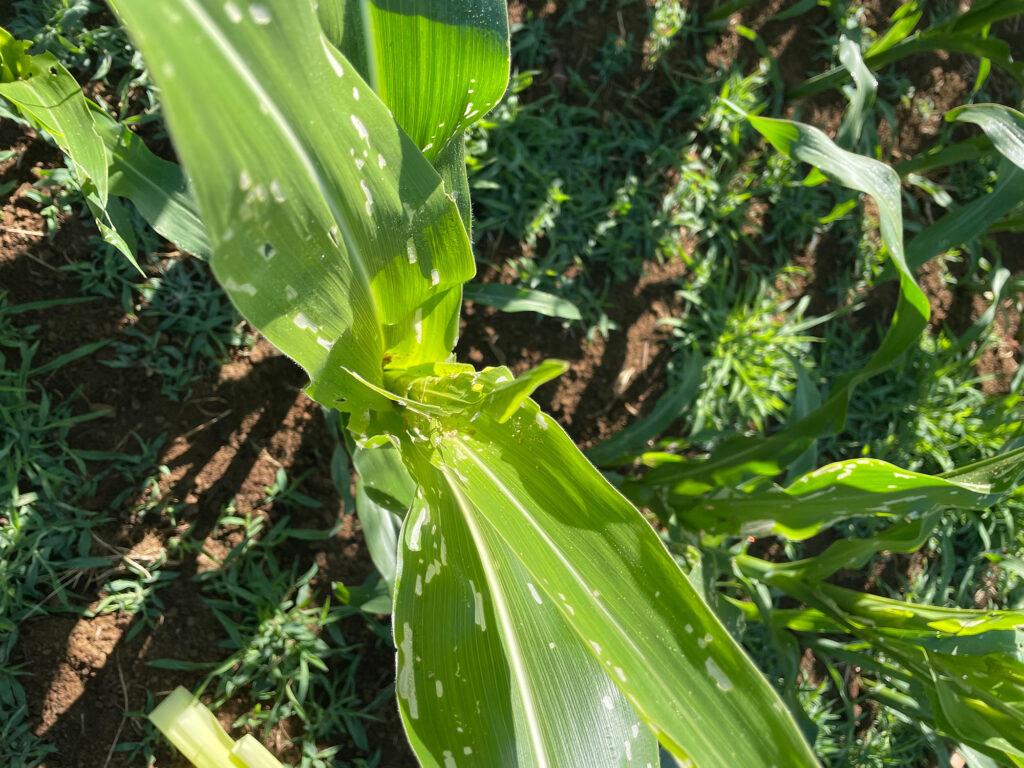
Near Fish Creek, corn earworm (Helicoverpa armigera) larvae were identified causing feeding damage to 30-40% of a maize crop.
Fall armyworm larvae have also been found near Echuca, where they were reported to be causing leaf damage in maize.
Also near Echuca, the lesser armyworm (Spodoptera exigua), has been found causing windowing damage and chewing through into the corn whorl of 3-6 leaf corn crops.
Why is the fall armyworm in Victoria this summer?
The fall armyworm is a sub-tropical/tropical species; this introduced moth survives in northern regions of Australia where temperatures are not too cold, and moisture is available.
Victorian winters are too cold to allow them to have a permanent presence here, but their ability to migrate and disperse thousands of kilometres, means they can arrive down south.
And when they do migrate and arrive during our warmer months, this is when they can reproduce locally and pose a risk to south-eastern crops.
While fall armyworm is considered present in Victoria, with moths detected in 2021, this year is the first time our PestFacts south-eastern team have received reports of larvae in field crops.
Several reasons and factors could help to explain recent activity:
1. January is the peak month for fall armyworm growth in Victoria
Predictive modelling work led by Dr James Maino at Cesar Australia, provides key insights into the months where south-eastern regions of Australia could support seasonal populations.
This work shows that if fall armyworm moths migrate to the south-east, conditions from December to March can support fall armyworm population growth, particularly in January (see population growth potential maps). This means that during these months, there is the potential for fall armyworm populations to build-up and support further local migrations in the south.
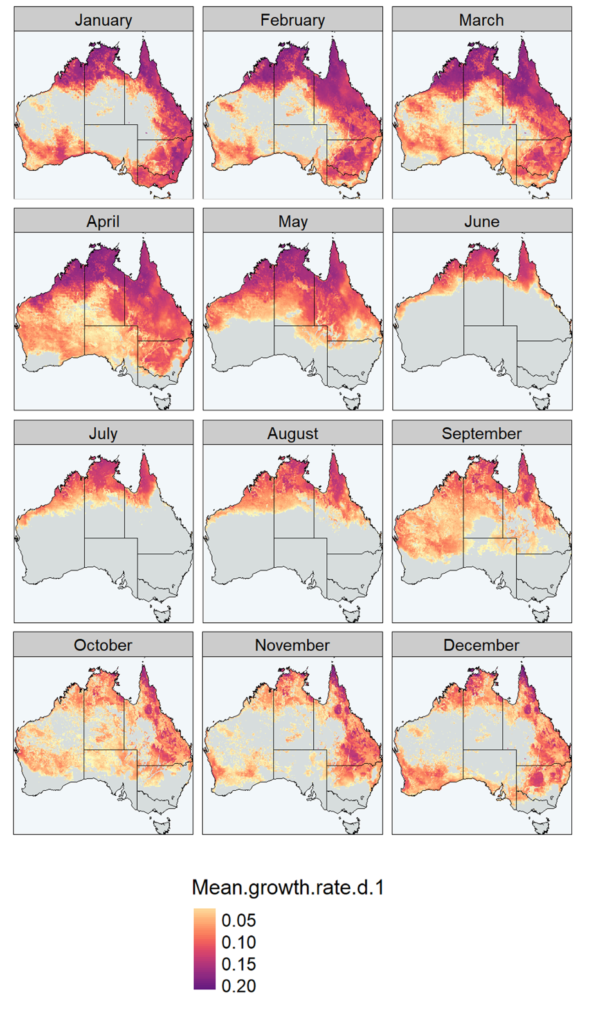
2. Fall armyworm still filling its niche
The fall armyworm was first detected in Australia in Far North Queensland in February 2020; it is relatively new to our environment, and it is possible that it has yet to fully expand and invade its potential range here. Especially because of large distances and the temperature and moisture barriers that it faces.
If the fall armyworm has been progressively filling its niche since early 2020, it is possible that we may see more frequent local migrations and population growth in south-eastern regions, particularly when climatic conditions are favourable.
3. The impacts of La Niña
The fall armyworm has a very wide host range and recent above-average rainfall in many regions of eastern Australia would likely support more green material than usual (particularly in the more arid interior regions where rainfall is very sporadic). These favourable conditions can support greater population growth and migrations of fall armyworm.
What to expect as the season progresses
Fall armyworm populations could continue to grow in maize growing regions of Victoria during the remainder of summer and into autumn.
But during April, conditions will become less favourable for fall armyworm in much of south-eastern Australia and by May, even if fall armyworm is still present, the population will likely no longer be able to grow.
Keep in mind that if conditions are more mild than usual during autumn, it may extend the period of suitability in south-eastern Australia.
Fall armyworm identification
It’s important to look for the several features shown in the infographic below to determine if you have fall armyworm. These features are move obvious in later instar larvae.
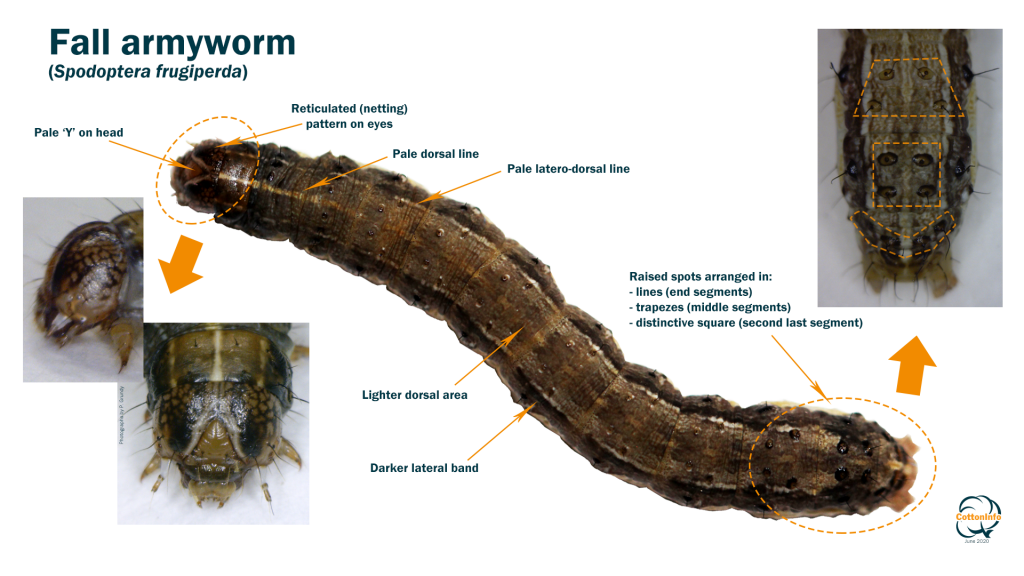
Confusion with corn earworm larvae, which also feed on maize over the warmer months, usually arises as they too have raised spots in a similar arrangement to fall armyworm larvae.
One feature which can help to distinguish corn earworm larvae is the ‘saddle’ often (but not always) visible on their 4th body segment (the segment after their 3 sets of true legs). This saddle is referring to the dark patches on both sides of the larva on this segment when viewed from the top-down.
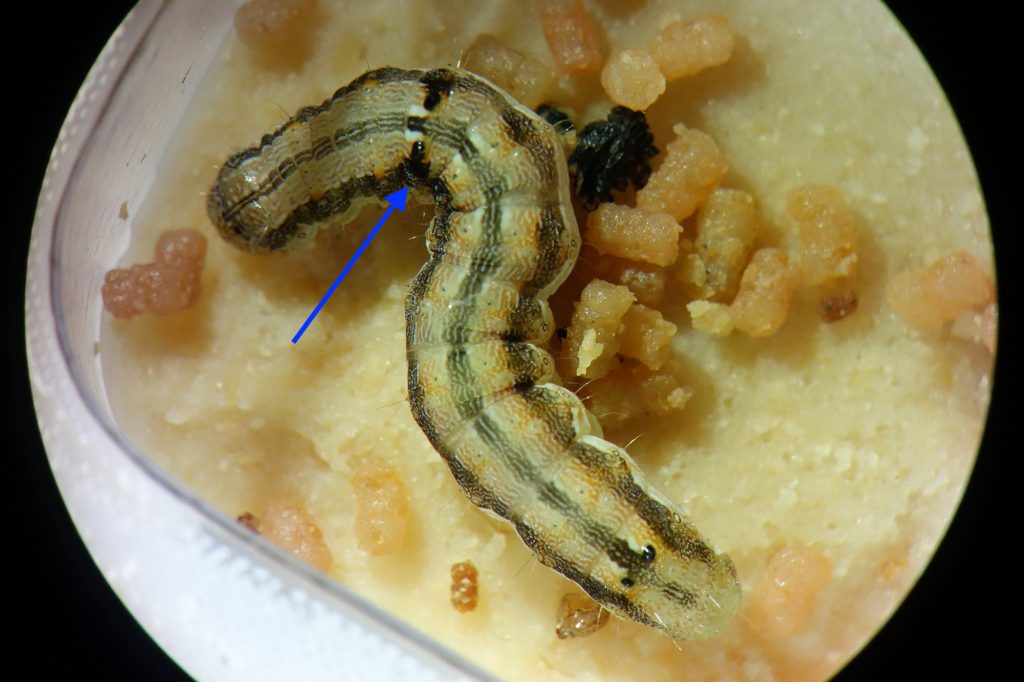
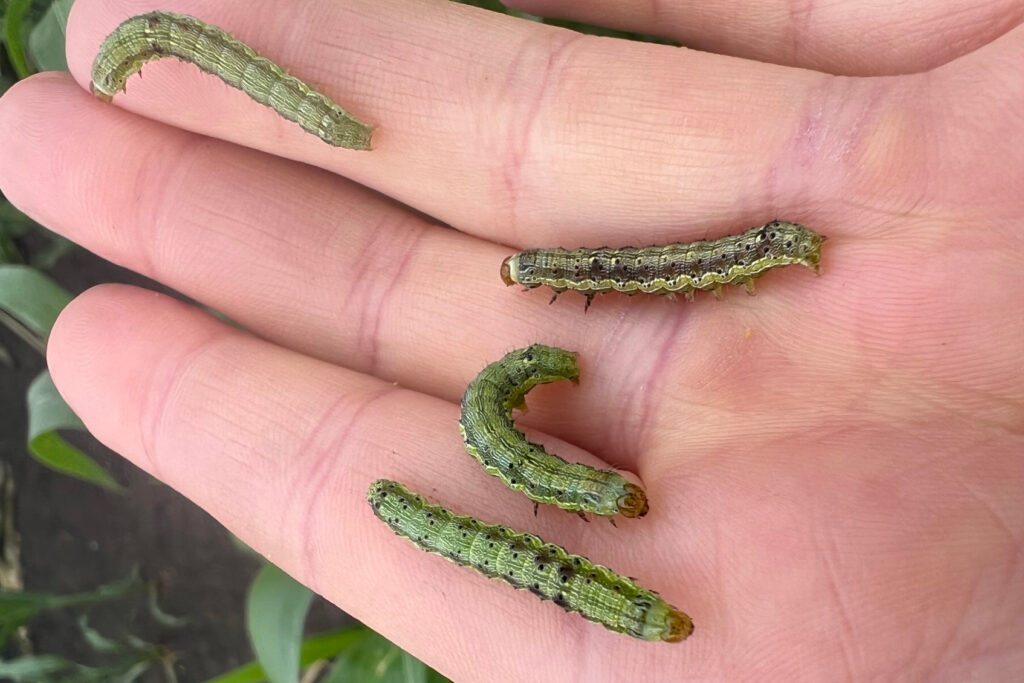
Looking for more information?
The potential impact and extent of damage caused by fall armyworm larvae in Victorian maize is currently unclear. If you have fall armyworm in your maize (or sorghum), we encourage you to report your observations to our PestFacts south-eastern team on 0484 310 697 to help us gain a better understanding of their level and scale of impact.
If the level of feeding damage is concerning and you are considering chemical management, please be aware that fall armyworm has developed resistance to several modes of actions.
While not all the information will be relevant to the southern grains regions where fall armyworm is a seasonal pest, the Beatsheet of the northern grains region has a wealth of information on the fall armyworm.
As we receive more reports and field intelligence about fall armyworm in Victoria, we hope to provide more regionally relevant advice.
Acknowledgements
Thanks to Dr James Maino and Dr Lizzy Lowe (Cesar Australia) for their assistance with developing this article. Thanks to Daniel Andrews (Nutrien Ag), Isaac Reilly (Nutrien Ag) and Sally Pate (Nutrien Ag) for providing field observations.
Cover image: Photo by Isaac Reilly







